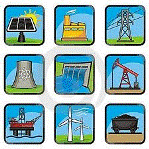Department of Agricultural Economics: Undergraduate Research
Date of this Version
Fall 12-18-2018
Document Type
Article
Citation
Op-Ed from ENSC 230. Energy and the Environment: Economics and Policy, University of Nebraska-Lincoln, Department of Agricultural Economics, Fall 2018
Abstract
The common gasoline-ethanol mixture available at gas station pumps is 10% ethanol (E10). The Environmental Protection Agency had a ban on 15% ethanol (E15) during summer months. The news has been covering the talks of President Trump to lifting this summer ban and supporters in Iowa are excited.
Should Nebraska shout Hoorah, too? It is common knowledge Nebraska is better than Iowa. We should be excited, too, right?! NO.
Iowa has been tracking Fuel Revenue sales including those from ethanol blends and has been pushing for the E15 ban lift. Considering Iowa produces MORE corn and MORE ethanol than Nebraska, the calculations from Iowa Department of Revenue are BEST CASE scenario for Nebraska.
How much more E15 is CAN be offered or sold?
There were 4.87 million gallons of ethanol sold from E15 in Iowa during winter months. The lift of the E15 ban could allow about 2.4 million gallons of additional ethanol sold in the summer. It takes a bushel of corn to make 2.8 gallons of ethanol.
Therefore, no more than 900 thousand bushels of corn production would contribute to ethanol production. This is a small fraction compared to the 1.68 BILLION bushels Nebraska produced in 2017. Barely a 0.0005 % increase in production!!
With the number of farm operations in Nebraska and the 2018 average corn prices, each operation would only see $67 total increase. $67.00! These are not numbers to be cheering about!
Why isn’t more ethanol sold?
According to the Nebraska Ethanol Board, Nebraska has approximately 100 flex fuel gas stations for E15 and E85. Pump & Pantry is a common site to purchase E15, but not many stations offer it. Plus, if there is a major fossil fuel company promoting, the gas stations usually are contracted and are not ALLOWED to sell anything more than E10.
Despite the lack of availability of E15 at your local pump, the American Coalition for Ethanol has calculated a high potential demand. The Renewable Energy Association released the PEI report stating E15 can be relatively cheap to implement. The cost to implement can range from$1,000 to $10,000 instead of the hundreds of thousands suggested by critics. There is also government funding available.
So NOW what? There is hope for the consumer!
Ethanol is a good thing! Through an EPA phase out, ethanol became an additive to gasoline to replace the ground water polluting MTBE additive. GOOD! Less pollution!!
Additives help oxygenate gasoline and burn more completely resulting in less tailpipe emissions. GOOD! Less greenhouse gases!!
Research has shown carcinogens are reduced with E15 compared to regular gasoline. GOOD! Less cancer risk!!
Critics have exclaimed the E15 is contributing to smog. E15 has a Reid vapor pressure (RVP) of 10 psi, where E10 is allowed with a RVP of 9 psi. Yes, 1 psi can be significant. But ethanol is not being openly exposed to the atmosphere. Consumers close their gas caps on their cars. Pump stations and transportation trucks are sealed so the opportunity for evaporation is reduced.
1.5 million cars in Nebraska can run on E15 with EPA approval. That is a large amount considering there are only 1.8 million people in Nebraska. But people have been scared to use this renewable fuel for fear of reduced gas mileage or engine damage. If your car has a yellow-flex fuel cap, you can use E15. The EPA suggests E15 only for cars newer than 2001.
The Renewable Energy Association fact sheet states you milage may only decrease 2% which can be worth it for a potential 6 cent price reduction per gallon. The effect ethanol has on gas milage is about the same as drive without your car tires properly inflated. Unless you check your car tires every day, the 2% doesn’t affect you.
In conclusion, NO, Nebraskan farmers should not be cheering. The lifted E15 ban offers little economic relief from the hardships of 2018. However, consumers can be HOPEFUL! Year round ethanol may increase consumer options. There are benefits of using ethanol and higher blends may become more accessible in the future. Consumers may soon have more chances to be green if they want to.
Included in
Environmental Indicators and Impact Assessment Commons, Natural Resources and Conservation Commons, Oil, Gas, and Energy Commons, Other Environmental Sciences Commons


